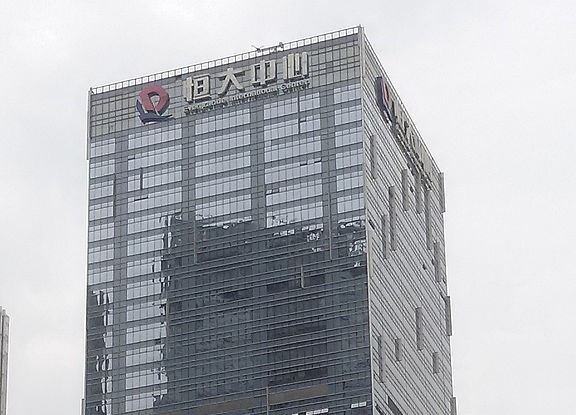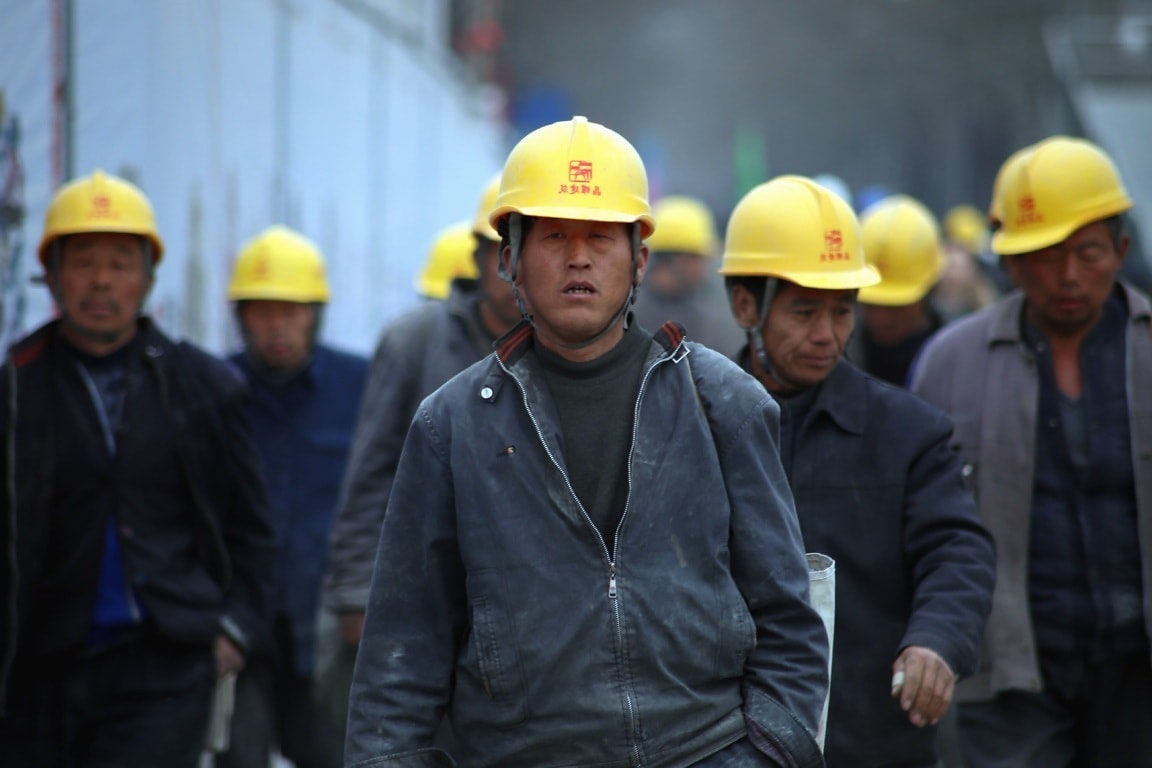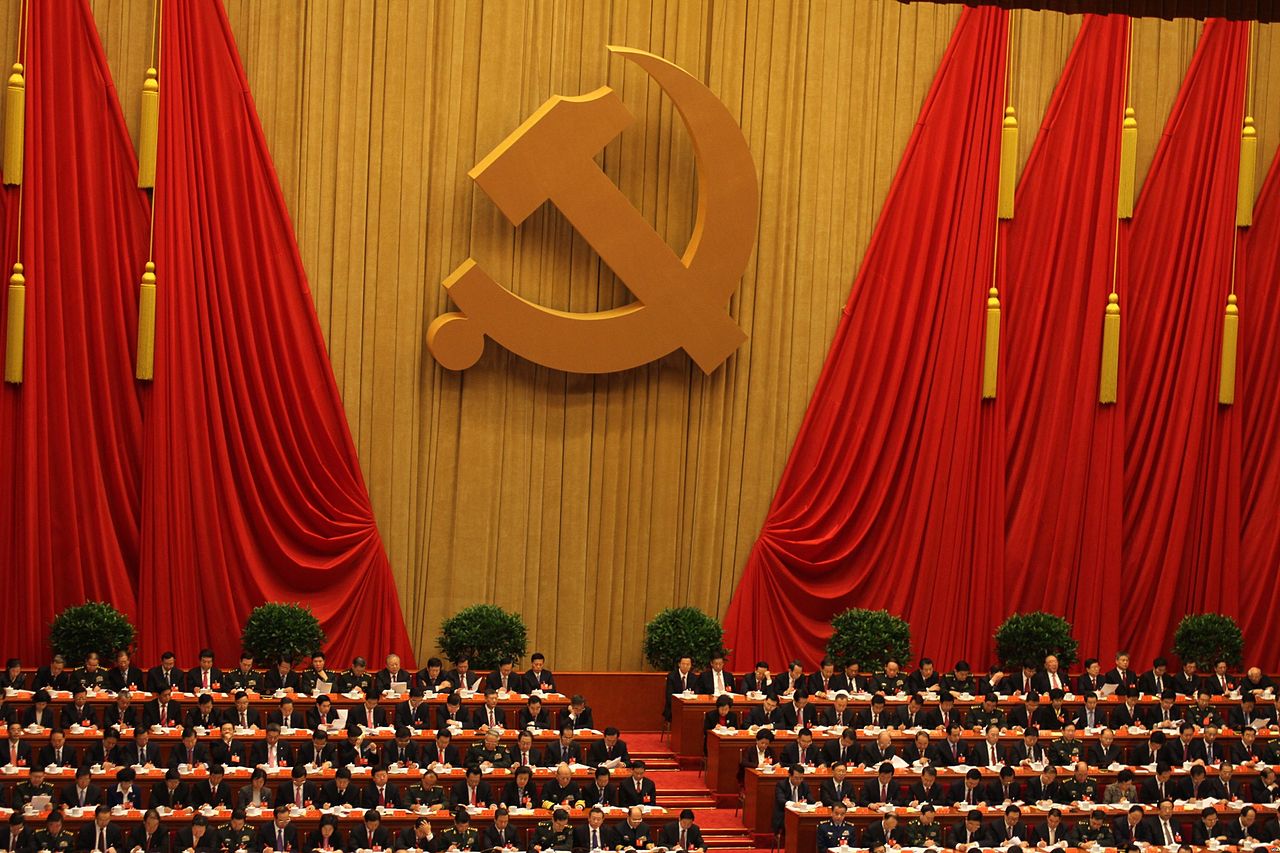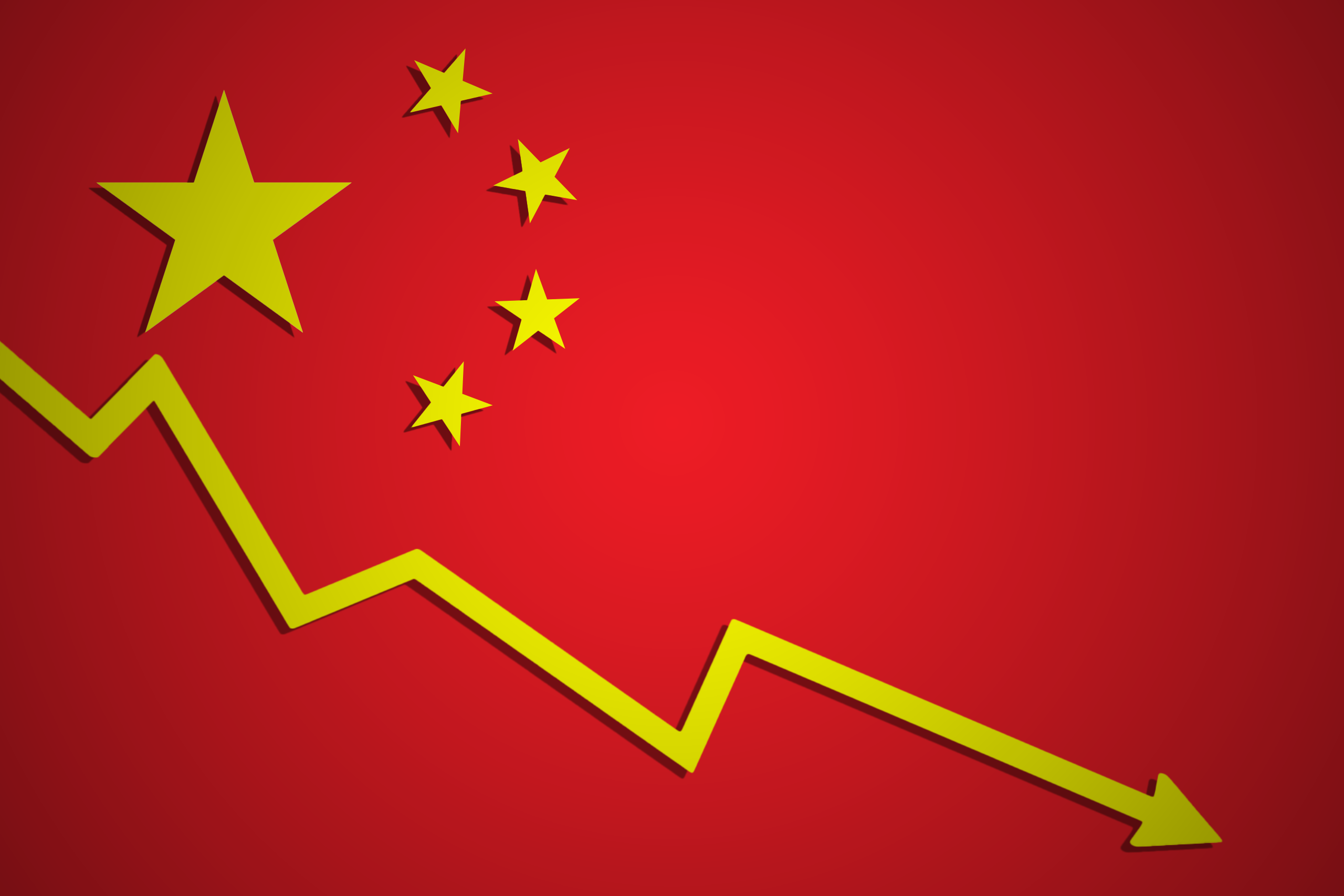The news that Evergrande has filed for bankruptcy protection in the United States has sounded the final death knell for China’s real estate industries. A series of corporate defaults, a recession in the real estate market, soaring unemployment and a rapid decline in people's consumption have debunked the ruling Communist Party of China (CCP) regime’s fraudulent claims of a “strong economic recovery” in China.
No matter how much power is centralised, the CCP bureaucrats will not be able to solve the crisis of capitalism, a reality that more and more workers and young people are realising.
[The following is an abridged and updated version of an article originally published in Chinese on 28 August.]
Real estate industry at the end of its rope
Evergrande Group, as the benchmark of China’s real estate sector, was once a ‘trillion-dollar empire’, and in 2017 its chairman Hui Kayin was crowned the richest man in China. But from the moment it went into crisis in 2021 to its filing for bankruptcy protection in the US on 17 August this year, Evergrande’s death agony has encapsulated the deteriorating state of China’s real estate market.
On the evening of 17 July, Evergrande released a company performance report which showed that its net loss for the two years 2021-2022 totalled 812.03 billion RMB (or $112.5 billion USD). By the end of 2022, Evergrande’s total liabilities were about 2.4 trillion RMB (or $330 billion USD), while its assets were valued at just 1.8 trillion RMB. It was thus insolvent, with its liabilities being roughly equivalent to almost 2 percent of China’s GDP.
But Evergrande is not the only one. On 12 August, another real estate giant, Country Garden, announced that its 11 domestic corporate bonds will be suspended. It also failed to pay the coupon of two US dollar bonds that should have been paid on 7 August. Country Garden has been called the ‘number one real estate enterprise in China’, and was once regarded as a ‘model enterprise’ by both the government and industry. Yet, its life is now also hanging by a thread.
A host of Chinese property companies are on the knife’s edge of an industry-wide recession. The bursting of the property bubble was an entirely predictable outcome of the logic of capitalism, and the COVID-19 pandemic only accelerated and worsened this process.
 Evergrande Group, as the benchmark of China’s real estate sector, was once a ‘trillion-dollar empire’ / Image: CRCHF, Wikimedia Commons
Evergrande Group, as the benchmark of China’s real estate sector, was once a ‘trillion-dollar empire’ / Image: CRCHF, Wikimedia Commons
Real estate investment, which has been soaring for decades, maintaining 8-10 percent growth even amidst the epidemic, was down more than 10 percent year-on-year in 2022. And only halfway through 2023, investment is already down 8.5 percent year-on-year. More than 60 percent of companies in the sector that have published performance reports for the first half of 2023 expect to make a net loss this year.
While the central government remains largely passive in the face of these crises, going no further than arranging ‘consultations’, ‘suggestions’ and ‘appeals’ for other private ventures to rescue the troubled enterprises, regional and local governments have acted forcefully. On 3 August, Hebeir’s Zhengzhou city government introduced the ‘15 articles’ in an attempt to save local real estate firms through tax cuts, cancellation of sales restrictions, and the implementation of policies such as “recognising houses but not mortgages”.
More and more cities began emulating the Zhengzhou experience, with Sichuan Province’s Ya'an city even violating national regulations on house sale prices, allowing properties to be purchased outside the officially allowed minimum price range. But this did precious little to reverse the situation.
As the locomotive of China’s economic development, real estate has the largest industry volume and the highest direct contribution to GDP growth of any sector, and is connected to more subsidiary and dependent industries (e.g. construction, finance, marketing, etc.) than any other sector. Real estate accounts for 76.4 percent of the debtor assets of listed banks with mortgages exceeding 10 trillion yuan.
Real estate is the main conduit through which the interests of the regime bureaucracy and the capitalist class merge. Data from the Ministry of Finance showed that the size of the nation’s land transfer premiums (i.e. income raised on land sales by local governments etc.) grew to 6.5 trillion yuan in 2018, and that these sales now accounts for 66.5 percent of local government revenue. Real estate is a sensitive barometer of China’s economy, and an unstoppable decline in real estate represents an unstoppable slide towards crisis for China’s entire economy.
Zhongzhi, shadow banking and the inevitability of the spread of the crisis
At the end of July this year, it was rumoured that China’s largest private asset management company, Zhongzhi Group (which manages nearly one trillion yuan in assets and employs more than 10,000 people), was having liquidity difficulties and had hired internationally renowned accounting firm KPMG to audit its balance sheet. The news immediately attracted widespread attention.
Barely a few weeks later, Zhongrong Trust, a company within the Zhongzhi umbrella, began to default on payments. Several companies that had purchased investment products issued by Zhongrong Trust announced, one after another, that they had “stepped on mines” and had not been paid their principal and investment returns. A small group of protesters even went to Zhongrong to demand their investments be repaid.
The significance of the Zhongzhi crisis is quite far-reaching – Zhongzhi is known to be China’s largest ‘shadow bank’. This is a particularly prominent feature of the Chinese economic system. These ‘shadow banks’ emerged as certain industrial enterprises grew in size, and then began bringing in an ever-growing portion of their profits through lending and financial trickery: in effect, they began playing the role of financial capital. At a certain point, many of these ‘shadow banks’ began making more money from their financial transactions than from their own original industrial activity.
We explained the causes and consequences of this phenomenon here at marxist.com two years ago, when news of Evergrande’s troubles first broke out:
“As Marx explained, credit allows capital to expand beyond its natural limits, and to temporarily overcome its crisis – but at the cost of an even greater crisis when those debts have to be repaid.
“As more debt is issued, it becomes less effective. It now takes around $4 of debt to produce an extra dollar of growth in the Chinese economy, whereas before the stimulus it took around $1.40. This is because the extra debt is largely taken on to pay off existing, unsustainable debts, instead of to spend on creating new productive capacity.”
While Zhongzhi has actually been in trouble since 2021, the depth of the crisis it faces today suggests that the era of “greater crises” is already upon us. It is difficult to estimate the scope and consequences of the Zhongzhi crisis because of the opaque nature of shadow banking, but it is likely to be unexpectedly broad, and very much beyond the limits of what the CCP regime is capable of dealing with.
The ‘mystery’ of rising unemployment
While huge capitalist enterprises are being tied in knots, the Chinese working class is simultaneously facing another social contradiction. As Marx explained in Capital, in a capitalist society, as a consequence of the needs of capital accumulation, a large number of unemployed people are required at all times to serve as a reserve army of labour for industry. Unemployment is therefore a necessity under capitalist society.
 More than 10 percent of the present workforce have experienced unemployment over the three years of the epidemic / Image: Pixnio
More than 10 percent of the present workforce have experienced unemployment over the three years of the epidemic / Image: Pixnio
Officials claim that China's unemployment rate in the first half of 2023 will be only 5.3 percent. But how did they arrive at this magical 5 percent figure? Its veracity is doubtful to say the least when we know that large numbers of fresh graduates are unemployed; more than 10 percent of the present workforce have experienced unemployment over the three years of the epidemic; and when we know that the absolute number of unemployed people between the ages of 16 and 40 has increased by 6.2-7.5 percent compared to pre-pandemic levels?
The unemployment rate for young people aged 16-24 was 21.4 percent in July, meaning that (officially) two out of every 10 young people in the 16-24 age group were unemployed, and the actual unemployment rate probably far exceeds that figure. Faced with the impact of the July graduation wave, the regime’s Bureau of Statistics simply suspended the publication of data in August, claiming that it had encountered “technical difficulties”. What a convenient time to encounter such difficulties!
The CCP regime is incapable of solving the problem of unemployment and, in the final analysis, so is the capitalist system they defend. There is no doubt that, when the recession really hits, youth employment will become even more severe.
Economic downturn and falling consumption
A Foreign Ministry spokesman said: “China’s economy continues to recover, is generally picking up and improving, and remains an important engine of world economic growth!” Despite the loud chest thumping of the bureaucrats, the figures tell a different story.
Investment, exports and consumption are known as the ‘troika’ of the Chinese economy. Now, investment and exports, two out of the three, are already exhausted.
Cumulative growth in fixed asset investment in July was 3.4 percent, a sharp slow down from 5 percent in March. The manufacturing PMI (Purchasing Managers’ Index, which is above 50 percent for industrial expansion and below 50 percent for contraction) was 49.3 percent, and has been below 50 percent since April.
According to statistics published by China’s General Administration of Customs, the total value of imports and exports of goods fell by 8.3 percent year-on-year in July. The total value of China’s imports and exports in the first seven months of the year was $3.4 trillion USD, down 6.1 percent.
The US and Europe continue to push for decoupling from the Chinese economy, with US-China trade down 15.4 percent in the first seven months of this year. Shrinking foreign trade is a serious blow to an economy that is still quite dependent on exports.
What about consumption, the third engine of China’s economy? Since the lifting of the COVID-19 lockdown this year, residential consumption experienced a rebound in the first four months of 2023. The growth rate peaked at 18.4 percent in April, and then immediately began to decline exponentially, with consumption growth of only 2.5 percent in July.
The statistics that month for total sales of consumer goods directly reflect a downturn in ordinary people’s consumption, with only the essentials of life such as food, cigarettes, alcohol and medicines showing growth. Meanwhile, consumption of the vast majority of other commodities was declining, and goods and services that could be consumed normally in the past are turning into luxuries that require careful budgeting to access.
This economic horror show, of a recession and weak consumption, has frightened the regime, which wasted no time in issuing a Notice on Expansion of Consumption (colloquially referred to as ‘Twenty Articles’). This notice is filled with uninspiring and impractical recommendations punctuated with triumphalist sloganeering.
Some of the policies seem ridiculous from the workers’ point of view, such as encouraging citizens to borrow more credit and to enter into debt in order to expand consumption. Instead of choosing to issue subsidies and consumption vouchers to workers, the state has only issued a piece of scrap paper. Time will soon give us an answer as to whether this scrap of paper will stimulate consumption.
Capitalist prosperity has passed, crisis and revolution is the future
 The CCP’s intervention has not only failed to resolve Evergrande’s crisis, it will prove impotent to prevent new implosions either / Image: Dong Fang, Wikimedia Commons
The CCP’s intervention has not only failed to resolve Evergrande’s crisis, it will prove impotent to prevent new implosions either / Image: Dong Fang, Wikimedia Commons
The Chinese economy is facing an unprecedented downturn. This is unlike the crisis of 2008, when China was an emerging economy with low state and personal debt, and its industry rapidly expanding. The current economic crisis is the first full-blown crisis that China has experienced since it gained a foothold in the world capitalist system, and the CCP is powerless to stop it from unfolding.
The recent series of crises has discredited the core argument of the theory of ‘socialism with Chinese characteristics’: i.e. that the contradictions of capitalism can be effectively managed through the forceful intervention of a powerful state (what they call “the enlightened leadership of the Party”).
The CCP’s intervention has not only failed to resolve Evergrande’s crisis, it will prove impotent to prevent new implosions either. Country Garden and Zhongzhi will not be the last of their kind, and more far-reaching corporate crises will follow.
In most of these crises, the CCP authorities have avoided direct bailouts or nationalisations, and have instead used a series of behind-the-scenes tactics, prompting other private enterprises to rescue these troubled giants.
This approach will neither solve the problem, nor is it likely to prevent the necessity of some kind of bail out of these companies with taxpayers’ money down the line. Calls for direct government bailouts are rising. However, once a precedent is set, more companies in crisis will come calling for government handouts.
The crisis of overproduction is an incurable capitalist disease: the economic chaos it creates tears society apart from top to bottom and sharpens class antagonisms. No matter how much the bourgeoisie and the bureaucrats value “stability” and “order”, the CCP is incapable of solving the crisis of capitalism. If you play with the bull, you get the horns.
They are prepared, however, to wield the iron fist of state repression in an attempt to beat back the rising anger of the working class. Past incidents such as the Jasic struggles, the Henan bank depositor protests, and the Foxconn strikes have taught us a bloody lesson: ‘stability’ under the party’s batons and guns means nothing but the suffering of millions of proletarians.
One of the main reasons the Chinese ‘Communist Party’ was able to get away with dismantling the gains of the 1949 Chinese Revolution and restoring capitalism was on account of the big lie it told the working class. Namely, that everyone in capitalist China would grow indefinitely wealthier under the leadership of the Party.
For some time after China’s transition to capitalism, typified by its accession to the World Trade Organisation, the CCP appeared to honour this promise. Twenty years later, and the crisis that has now arrived is showing the working class that the “golden age” of “stable growth” is over. What will follow will be a huge intensification of the class struggle.
The resources exist in society to enable all people to live decently. The material base is already ample, and science and technology are already sufficiently advanced. Only the working class can overthrow the CCP and the capitalist system behind it through revolution, and establish a democratic planned economy to replace the chaotic and anarchic market economy of capitalism.
Only then will it be possible to liberate China and the world from the barbaric abyss of capitalism and unleash the potential of the productive forces to create a communist society, free from exploitation and oppression.

